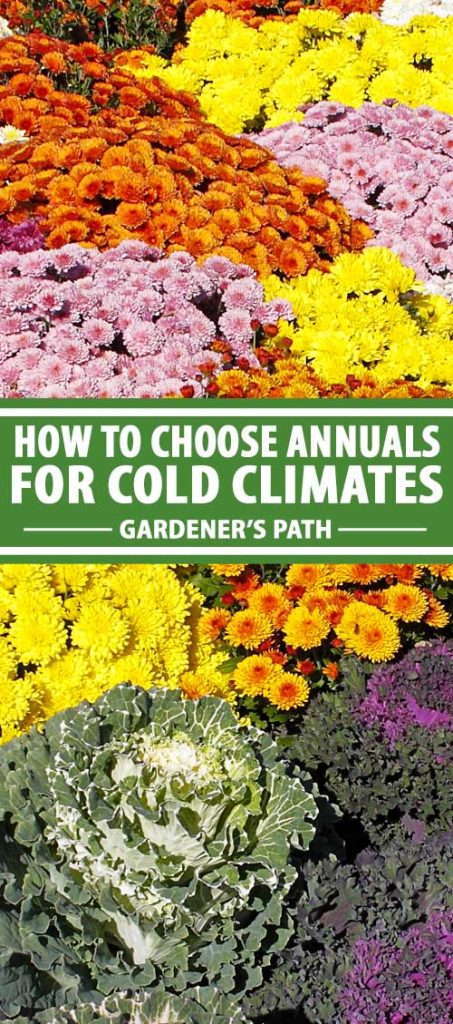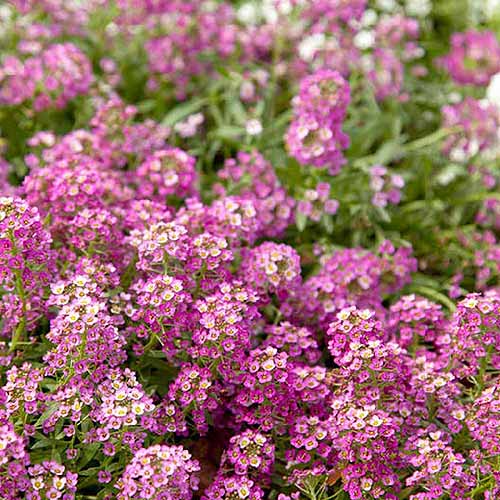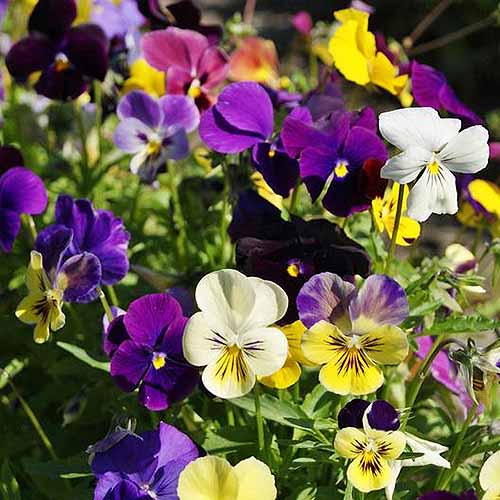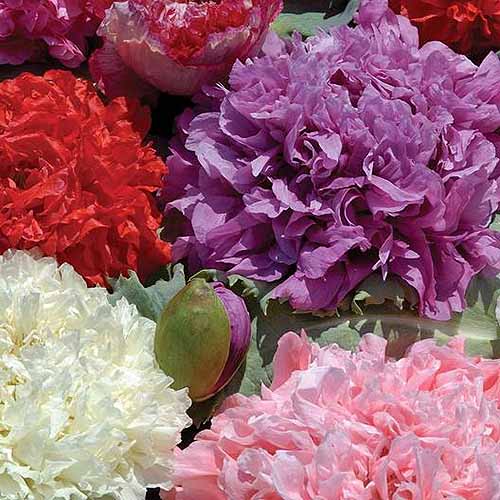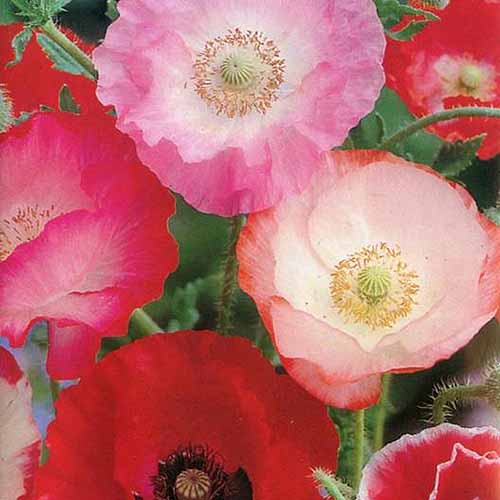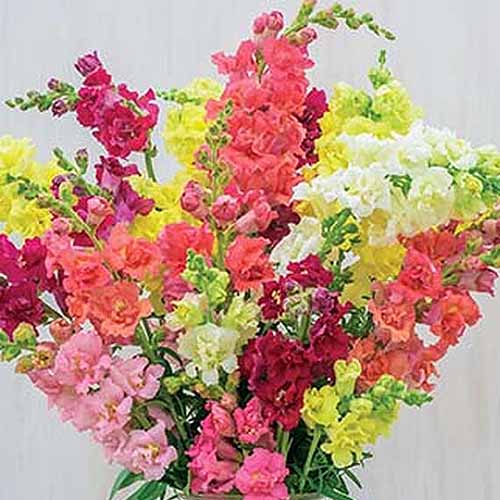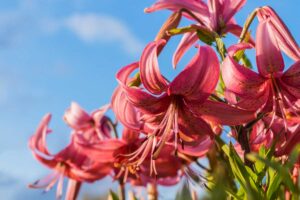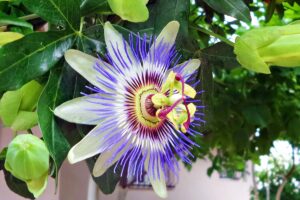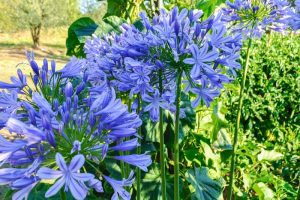Living in a cold climate doesn’t mean you have to miss out on colorful flowers in your garden.
While the growing season may be shorter, by selecting cold hardy annuals you can stretch those vibrant displays from early spring late into autumn.

We link to vendors to help you find relevant products. If you buy from one of our links, we may earn a commission.
Keep reading to learn how to choose flowering annuals that are best suited to colder growing zones.
What You’ll Learn
What Are Cold Season Annuals?
Cold season annuals are easy-to-grow flowers that thrive in the cooler temperatures of early spring or late fall, adding weeks or sometimes months of vibrant color to the garden.
They are often frost tolerant and some can even survive a light snowfall or two.

Not to be confused with hardy perennials, which die back each winter and resume growth the following season, annual flowers will not survive when temperatures drop too low.
While all will eventually die in winter, some are hardier than others and can withstand cool temperatures and frosts for longer periods.
By selecting hardy species, you can fill your garden with color earlier in the spring, and later into the fall.
Selecting Plants
The summer season is short in cooler climates.
When choosing annuals to plant, you can get the most bang for your buck by selecting those that can be started early in the spring, or that are resilient enough to survive well into autumn.
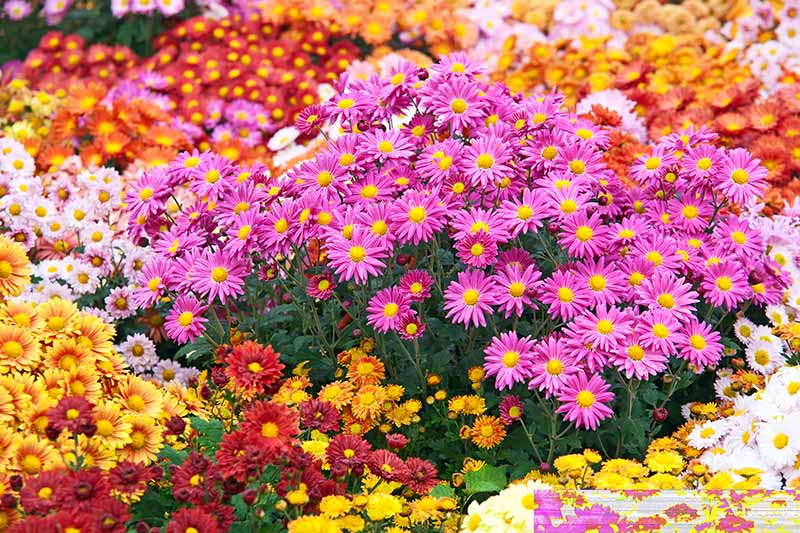
Look for seed packets or transplants that say things like “frost tolerant,” “plant in early spring,” “hardy,” or “cold tolerant.”
My Zone 4 garden is bursting with cool weather blooms of calendula, marigolds, and sunflowers that really come to life when temperatures begin to drop in autumn.
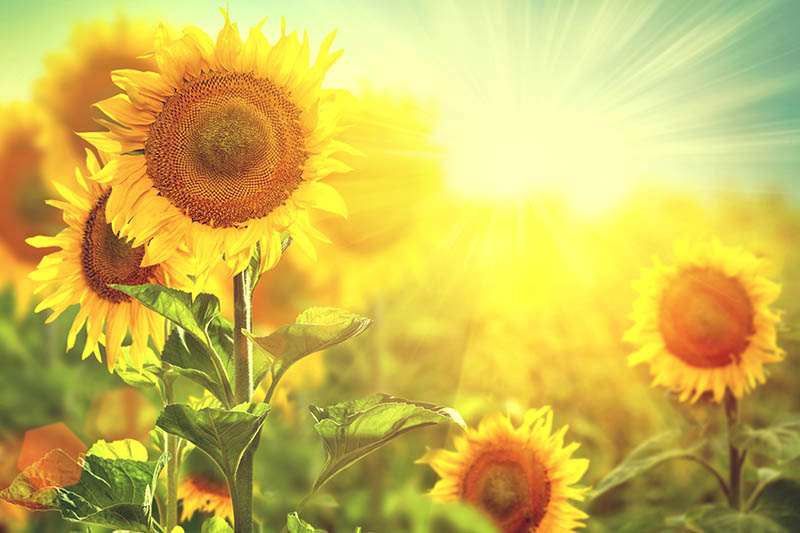
For ideas on what species to plant, check out this roundup of hardy annuals for cold climates.
Planting for Fall Color
Some plants, such as chrysanthemums, flowering kale, and pansies can be planted out in the fall for late season blooms. Look for species or specific varieties that will survive a frost or two.
Either start seeds in containers over the summer or purchase established transplants from a local nursery and set them out in the garden when nighttime lows have cooled down to about 40°F.
Many fall flowering annuals put on a brief but spectacular display of color.
Regular deadheading of faded flowers will promote additional blooming and keep the show going longer.
See our roundup of annuals for vivid fall color for more suggestions.
Autumn Sowing for Early Spring Blooms
One way to ensure early spring blooms is to sow hardy annual seeds in the fall.
Hardy annual seeds are those that survive in frozen soil and can therefore be direct sown in autumn or early spring.

Most self-seeding annuals fit into this category, since the seeds naturally overwinter in the frozen soil and germinate once temperatures warm. Many species benefit from or even require cold stratification – a period of freezing temperatures – in order to germinate.
Plants that tolerate frost such as calendula, larkspur, cornflowers, or poppies are great choices for direct seeding in fall.
Prepare a garden bed in autumn by clearing away any weeds and debris and raking in a couple inches of compost until the surface is smooth. Check your seed packets and either broadcast or sow seeds and cover with a thin layer of soil as directed.
If you aren’t able to get around to seeding before winter, you can also sow outdoors in early spring as soon as the soil thaws and it’s workable. Many varieties can be reseeded every few weeks through the season for continual blooms.
Start Early Indoors
If you have access to a greenhouse or indoor space suitable for starting seeds, you can also start in flats or containers in late winter, and transplant outdoors in early spring as soon as the ground can be worked.

Sow these seeds in containers filled with potting soil according to the packet instructions. Keep moist until they germinate.
Continue to grow indoors or in the greenhouse until they are a few inches tall with at least two sets of true leaves.
For about a week prior to planting outdoors, it is a good idea to harden off the seedlings, placing them outdoors for an increasing length of time each day to help them adjust to the elements.
Where to Buy
Are you ready to start sowing your seeds? Here are a few options to get you started.
Alyssum
Also called sweet alyssum, Lobularia maritima provides a pop of color with a delicate fragrance. Ideal for rock gardens, perennial borders, or container growing, plants grow up to nine inches tall at maturity.
Available in a variety of different colors including pink, purple, white, yellow, alyssum will provide a pop of color in early spring. This low-growing annual can also be used as a ground cover, and looks delightful spilling over the side of a container.
You can find seeds available at Eden Brothers.
And don’t forget to check out our guide to growing sweet alyssum.
Bachelor’s Button
Bachelor’s button, aka cornflower, Centaurea cyanus, grows up to 30 inches tall, and is available in a variety of colors from the classic periwinkle blue to purple, white, pink, and bicolored types.
A striking addition to beds and borders, bachelor’s button blooms make glorious cut flowers.
This plant self-seeds easily, and is considered invasive in some locations. So before you plant, be sure to contact your local extension office to check that it’s permitted in your area.
You can find bachelor’s button seeds in a mixture of colors available at True Leaf Market.
Learn how to grow bachelor’s button in this guide.
Pansy
A garden classic, Viola cornuta bloom profusely in a variety of colors. Purple, white, yellow, pink, and gorgeous bicolored and tricolored blooms brighten up the garden or containers.
Nothing says spring like some sweet Johnny-jump-ups, with their friendly little faces adorning a window box or garden bed.
There are numerous cultivars available and you can learn more about our favorites in this roundup.
Plants top out at four to six inches tall, and they look delightful spilling out of containers.
Why not try a mix of different colors? Heirloom pansy seed mix is available from Eden Brothers and contains yellow, purple, lavender, and bi- and tricolored pansies for a colorful display.
Check out our guide to learn how to grow pansies.
Poppy
With delicate double or single petals, Papaver spp. are available in a variety of vibrant colors, including red, pink, orange, yellow, purple, and even bicolored cultivars.
Easy to grow, these cool-season beauties will readily self-sow and come back year after year to provide a pop of color in containers, borders, and beds.
What color will you choose? I particularly like this Double Mixed selection of P. somniferum in pink, purple, red, and white double-petalled flowers.
Plants reach a mature height of 30-32 inches.
You can find Double Mixed seeds available at Eden Brothers.
Or if you prefer single-petalled varieties, why not try this mixture of red and pink P. rhoeas ‘Shirley’ poppy seeds? Plants will grow to a mature height of 12-30 inches. You can find seeds available at Eden Brothers.
Read more about growing poppies here.
Snapdragon
Snapdragon, Antirrhinum majus, bloom with long spikes with tightly-packed blooms.
Available in a variety of colors including white, red, pink, and orange, these long-blooming flowers grow to a mature height of 30 inches.
The strong stems make them very suitable for cut flower arrangements, and their upright stature makes a bold statement in the garden.
You can find snapdragon seeds at Burpee.
Learn how to grow snapdragon in this guide.
Keep the Magic Going
Just because you live in a cold climate, that’s no reason to limit yourself to an unnecessarily short season. Select cold tolerant annuals and dazzle your neighbors with colorful spring and fall displays.

What cold hardy annuals do you love to grow? Share your favorites in the comments below!
If you enjoyed this guide, check out these articles to learn more about growing hardy flowering annuals next:
- Tips for Growing Violets in Containers
- How to Grow Garden Lobelia
- How to Grow and Care for Dianthus Flowers
© Ask the Experts, LLC. ALL RIGHTS RESERVED. See our TOS for more details. Product photos via Burpee, Eden Brothers, and True Leaf Market. Uncredited photos: Shutterstock.

